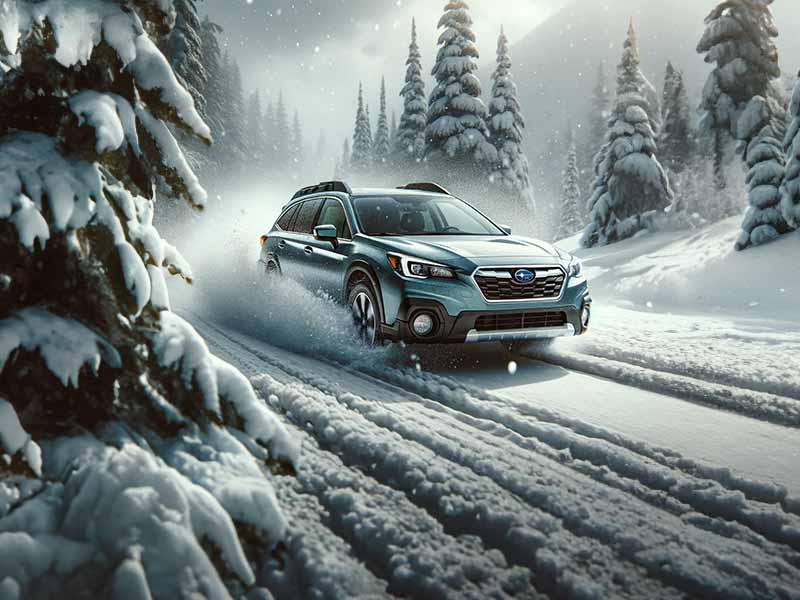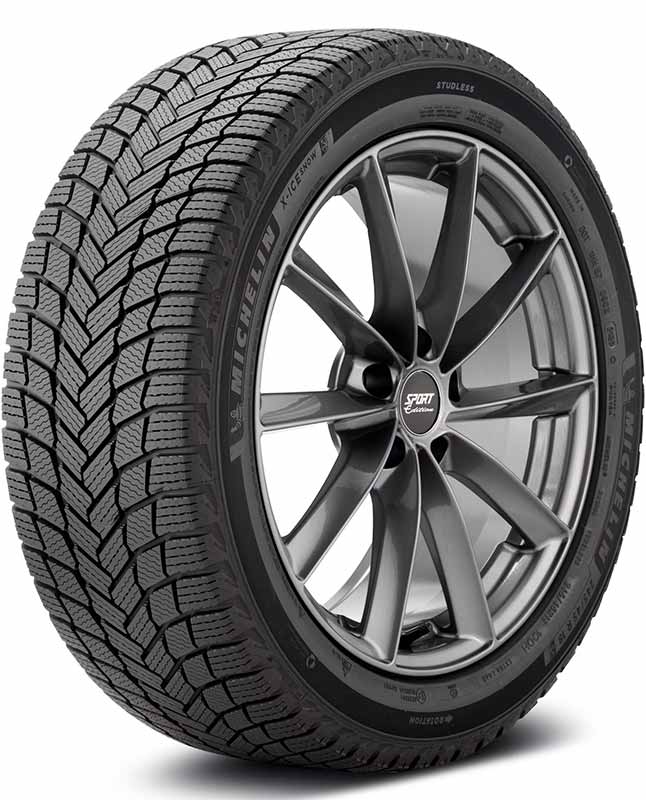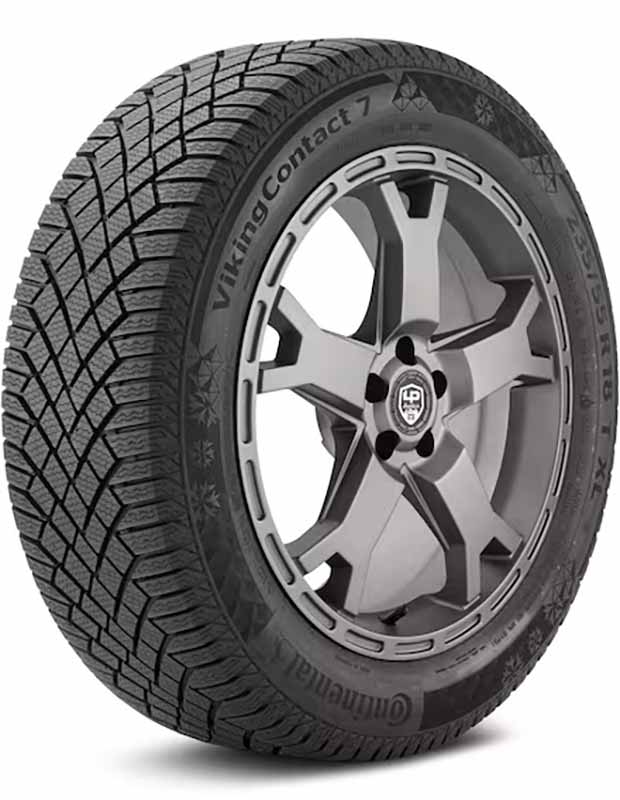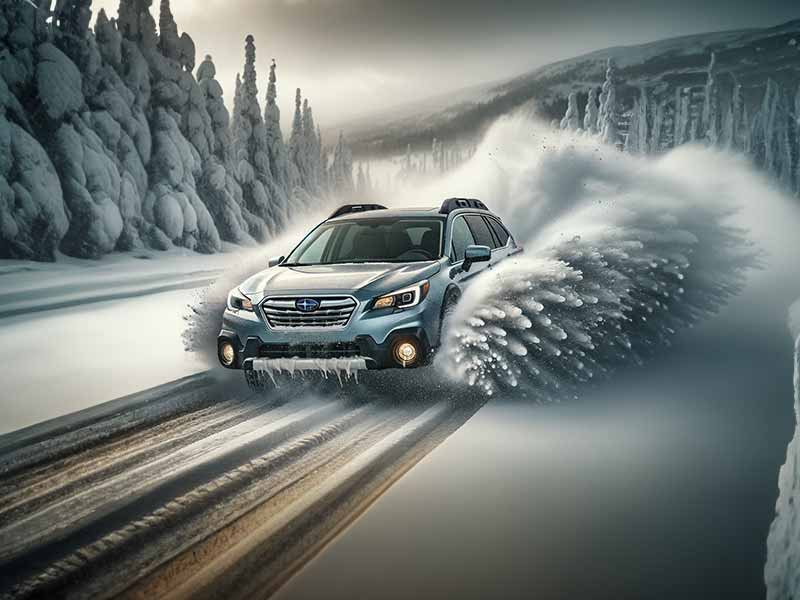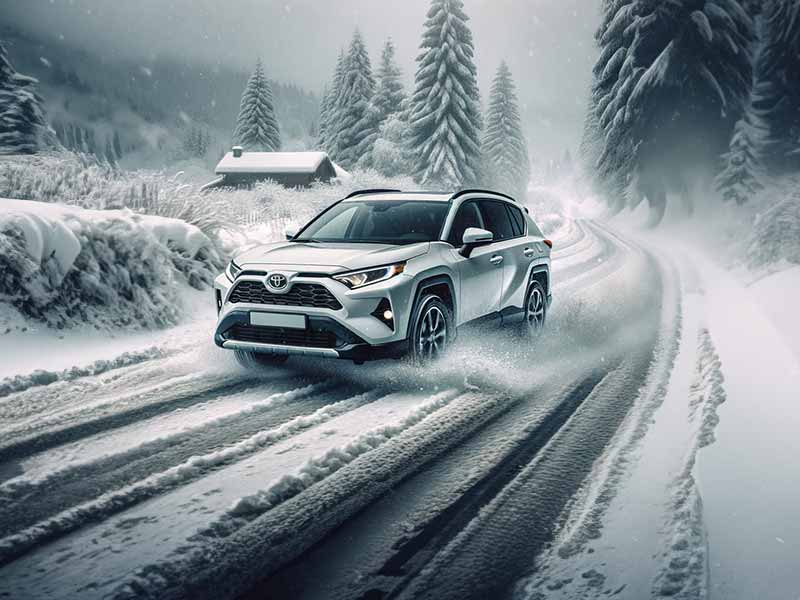Choosing the right snow tire can be a bit like picking the right winter coat—most will do the job, but the details make all the difference. Knowing these differences is key to making a choice you won’t regret when the snow starts to fall.
The Michelin X-Ice Snow generally offers better performance in deep and light snow, as well as on ice, compared to the Continental VikingContact 7. However, for a quieter, more comfortable ride, the VikingContact 7 excels, making it suitable for less extreme winter conditions.
In this article, we compare the Michelin X-Ice Snow and the Continental VikingContact 7 tires, evaluate their strengths and weaknesses, and consider other top competitors in the winter tire market.
Michelin X-Ice Snow
Customer Rating
Overall Rating
8.8 of 10
Wet Weather
8.6 of 10
Winter Weather
9.0 of 10
Tread Wear
8.8 of 10
Dry Weather
8.8 of 10
Ride Comfort
8.7 of 10
UTQG
Uniform Tire Quality Grade
UTQG Treadwear Rating: N/A
UTQG Traction Rating: N/A
UTQG Temperature Rating: N/A
Mileage Warranty
None
Find The Best Price
Key Performance Metrics
Hydroplaning: 9.1 of 10
Wet Grip: 9.1 of 10
Cornering: 8.5 of 10
Dry Grip: 8.8 of 10
Responsiveness: 8.6 of 10
Mild Snow Grip: 9.3
Heavy Snow Grip: 9.0
Ice Grip: 8.7
Comfort Level: 9.0 of 10
Road Noise: 8.5 of 10
When winter knocks, you need tires that can handle the chilly challenge. The Michelin X-Ice Snow is designed to give you a reliable grip when snowflakes start dancing on the roads. Let’s dig into the specifics and see where this tire shines and where it might leave you wanting more.
Wet Conditions
- Hydroplaning Resistance: 8.7/10
- Wet Traction: 8.8/10
In wet conditions, the Michelin X-Ice Snow holds its own with solid scores, ensuring your car stays steady even when the roads are slick. The hydroplaning resistance is commendable, reducing the risk of losing control on wet, slushy surfaces.
Dry Performance
- Corner Stability: 8.5/10
- Dry Traction: 8.8/10
- Steering Response: 8.7/10
Dry roads aren’t the natural playground for winter tires, but the X-Ice Snow manages well. It provides decent stability and responsive steering, making it a reliable choice even when the snow hasn’t fallen yet.
Winter/Snow
- Light Snow Traction: 9.3/10
- Deep Snow Traction: 9.0/10
- Ice Traction: 8.7/10
This is where the Michelin X-Ice Snow truly excels. Excellent traction in light and deep snow ensures that you keep moving when others might stall. Ice traction, while not top-of-the-line, is more than adequate for most winter scenarios.
Comfort
- Ride Quality: 9.0/10
- Noise: 8.6/10
Comfort is a strong point for this tire. It offers a smooth ride with reduced noise levels, making those long winter drives a bit more bearable.
Treadwear
- Score: 8.8/10
Durability is a key feature of the X-Ice Snow. It promises a longer life on the road, which is great news if you’re looking to avoid frequent replacements.
Pros
- Excellent snow handling
- High comfort and low noise levels
- Good hydroplaning resistance and wet traction
Cons
- Ice traction could be improved
- Premium pricing
The Michelin X-Ice Snow stands out in light and deep snow conditions, offering a comfortable, quieter ride with dependable dry and wet performance. However, if you find yourself frequently battling ice-glazed roads, you might notice a slight dip in performance compared to some competitors.
In a nutshell, the Michelin X-Ice Snow is a solid choice for those who face heavy snowfall and value comfort during winter drives. However, weigh the cost against your specific winter driving needs to make the best choice for your vehicle.
Continental VikingContact 7
Customer Rating
Overall Rating
8.7 of 10
Wet Weather
8.7 of 10
Winter Weather
8.7 of 10
Tread Wear
8.5 of 10
Dry Weather
8.6 of 10
Ride Comfort
8.9 of 10
UTQG
Uniform Tire Quality Grade
UTQG Treadwear Rating: N/A
UTQG Traction Rating: N/A
UTQG Temperature Rating: N/A
Mileage Warranty
None
Find The Best Price
Key Performance Metrics
Hydroplaning: 8.6 of 10
Wet Grip: 8.7 of 10
Cornering: 8.6 of 10
Dry Grip: 8.8 of 10
Responsiveness: 8.6 of 10
Mild Snow Grip: 9.1
Heavy Snow Grip: 8.8
Ice Grip: 8.4
Comfort Level: 9.0 of 10
Road Noise: 8.7 of 10
The Continental VikingContact 7 is another heavyweight in the arena of winter tires, crafted to tackle the harshness of icy and snowy roads. Let’s explore what makes this tire a contender and where it might show some vulnerabilities.
Wet Conditions
- Hydroplaning Resistance: 8.7/10
- Wet Traction: 8.7/10
The VikingContact 7 performs reliably in wet conditions, offering good hydroplaning resistance and traction. This ensures safer handling and better control during rainy or slushy winter days.
Dry Performance
- Corner Stability: 8.6/10
- Dry Traction: 8.8/10
- Steering Response: 8.5/10
While it’s not primarily designed for dry roads, this tire holds up well with respectable stability and traction. The steering response is slightly lower compared to its peers, which might be noticeable in quick, sharp maneuvers.
Winter/Snow
- Light Snow Traction: 9.2/10
- Deep Snow Traction: 8.8/10
- Ice Traction: 8.4/10
The Continental VikingContact 7 excels in light snow, providing a secure grip that instills confidence. It performs adequately in deeper snow, though some rivals might edge it out slightly. Its ice traction, while generally good, isn’t the strongest, which could be a concern in more extreme winter conditions.
Comfort
- Ride Quality: 9.1/10
- Noise: 8.7/10
This tire scores high in comfort, offering a smooth ride that absorbs bumps well and keeps cabin noise to a minimum. It’s one of the more comfortable winter tires on the market, making it a pleasant companion for cold-weather commutes.
Treadwear
- Treadwear: 8.5/10
The tread life of the VikingContact 7 is generally good, but it may wear slightly faster than some of the best in this category, particularly if used frequently in less-than-ideal conditions.
Pros
- Strong performance in light snow
- High comfort levels with low noise
- Good wet handling
Cons
- Ice traction could be better
- Moderate treadwear compared to top competitors
The Continental VikingContact 7 offers solid performance across most winter scenarios, particularly shining in light snow conditions and comfort. It’s a great option for drivers who prioritize a smooth, quiet ride. However, for those who regularly traverse ice-covered roads, there might be better-suited options.
Overall, the Continental VikingContact 7 is a dependable winter tire that will serve well in most conditions, but careful consideration of its slightly weaker ice traction is advised for those in more severe climates.
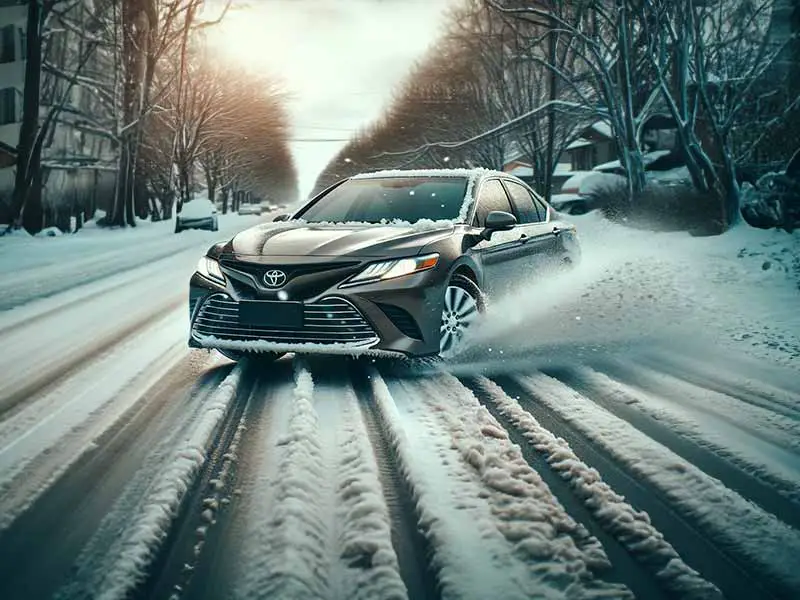
Comparative Analysis
When it comes to choosing between the Michelin X-Ice Snow and the Continental VikingContact 7, the decision hinges on specific driving conditions and personal preferences. Both tires offer robust features for winter driving, but they do have distinct strengths and weaknesses. Let’s delve into a side-by-side comparison to help determine which tire might be the better fit for your winter driving needs.
Performance in Snow and Ice
- Michelin X-Ice Snow:
- Scores slightly higher in deep snow traction.
- Offers better light snow traction.
- Has slightly better overall ice traction.
- Continental VikingContact 7:
- Performs very well in light snow but falls a bit behind in deep snow traction.
- Ice traction is lower, which could be a deciding factor for those in icier regions.
Wet and Dry Performance
Both tires perform comparably in wet conditions, with the Michelin having a slight edge in hydroplaning resistance and wet traction. In dry conditions, the differences are minimal but notable:
- Michelin X-Ice Snow:
- Provides slightly better corner stability.
- Has marginally better steering response.
- Continental VikingContact 7:
- Comparable dry traction scores.
- Slightly lower scores in corner stability and steering response, which could affect handling in dry but cold conditions.
Comfort and Treadwear
- Comfort:
- Both tires offer high levels of comfort, with the Continental VikingContact 7 edging out slightly in terms of ride quality and noise levels.
- Treadwear:
- The Michelin X-Ice Snow has a higher treadwear rating, indicating potentially longer tire life, which can be a cost-effective feature over time.
Cost and Value
- The Michelin X-Ice Snow typically comes at a premium price, reflecting its durability and performance features.
- The Continental VikingContact 7, while also not cheap, might offer better value for those who prioritize comfort over extreme ice performance.
The Verdict
Choosing between the Michelin X-Ice Snow and the Continental VikingContact 7 depends largely on your specific winter conditions and driving habits:
- Choose Michelin X-Ice Snow if:
- You frequently drive in areas with heavy snowfall and icy conditions.
- You value longer tread life and potentially fewer tire replacements.
- Choose Continental VikingContact 7 if:
- Comfort and noise level are your top priorities.
- Your winter driving is more often in light snow conditions and less on ice.
Other Competitors in the Market
While the Michelin X-Ice Snow and Continental VikingContact 7 are standout choices in winter tires, several other brands offer competitive options that might suit different needs and preferences. Here’s a look at some additional players in the winter tire market, comparing their key features and how they stack up against our primary contenders.
Bridgestone Blizzak WS90
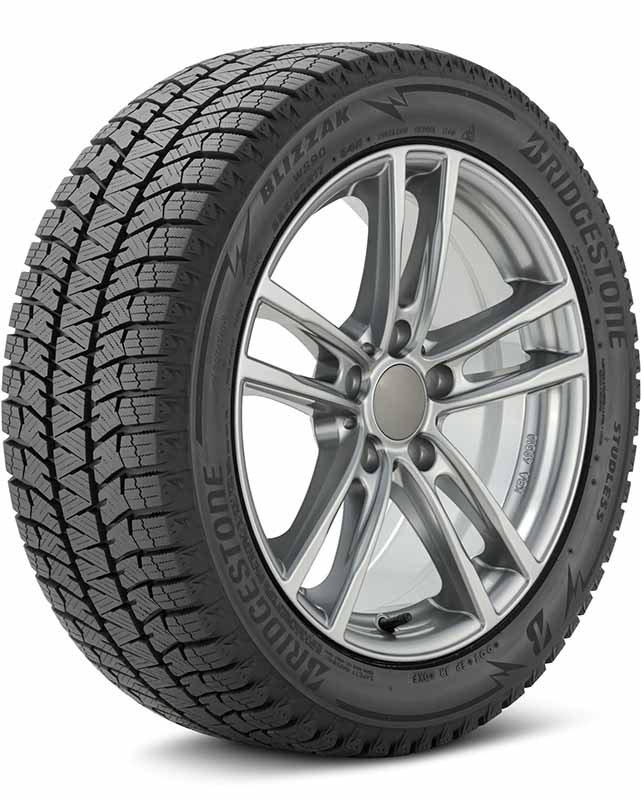
Performance Highlights:
- Excellent in winter conditions, with top scores in light and deep snow traction.
- Strong performance in wet conditions, particularly in hydroplaning resistance and wet traction.
- High comfort levels with good ride quality, though slightly noisier than some competitors.
Ideal for:
- Drivers who face varied winter conditions, including heavy snow and icy roads.
- Those looking for a tire that excels in both performance and safety during the winter months.
Goodyear WinterCommand Ultra
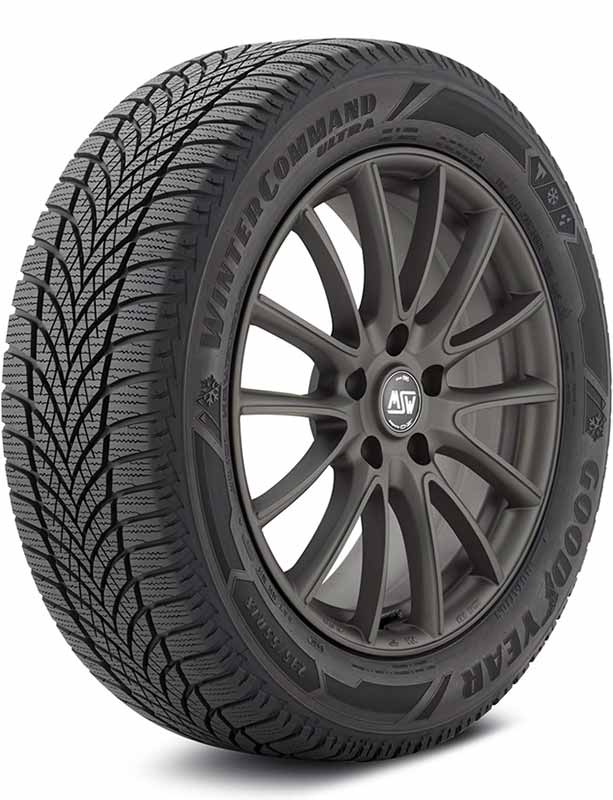
Performance Highlights:
- Very good scores in light snow traction and hydroplaning resistance.
- Balanced performance across wet and dry conditions, making it versatile for different winter scenarios.
- Comfort and noise levels are decent, but not the highest in the category.
Ideal for:
- Drivers who experience moderate to heavy snow and need reliable all-round winter performance.
- Those who value a good balance between snow traction and wet road handling.
Nokian Hakkapeliitta R3
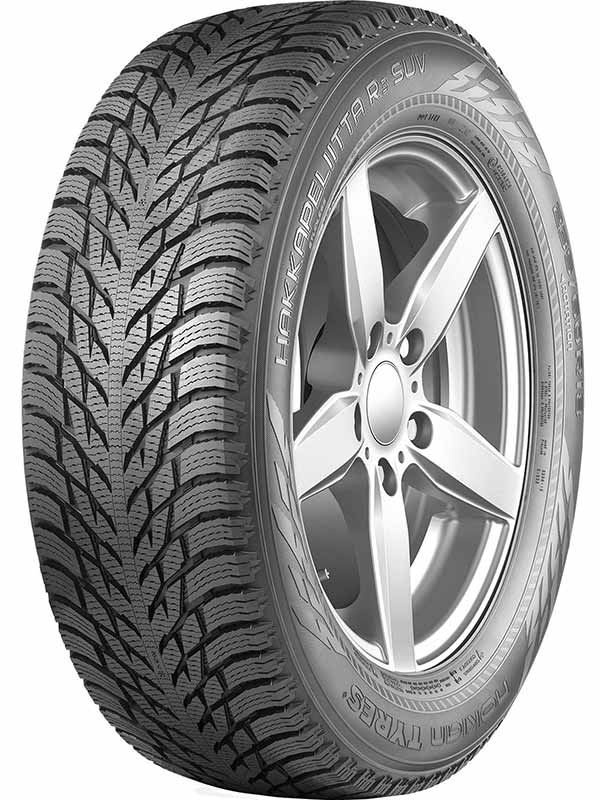
Performance Highlights:
- Exceptional in snow and ice, with the highest scores in the light snow traction category.
- The best choice for ice traction among the listed models.
- Strong hydroplaning resistance, but its performance in dry conditions is less impressive.
Ideal for:
- Those who live in extremely cold climates where ice and deep snow are prevalent.
- Drivers who prioritize top-tier winter safety and performance over dry handling.
When considering these alternatives, think about the specific winter conditions you face, your driving habits, and what aspects of tire performance matter most to you. Whether it’s ice traction, tread life, or overall comfort, each tire offers unique advantages that could be just the right fit for your winter driving needs.
Resources
Below are some links you may find helpful when learning about tires:
Final Thoughts
When deciding between the Michelin X-Ice Snow and the Continental VikingContact 7, consider the specific winter conditions you face. The Michelin X-Ice Snow is your go-to if you’re dealing with heavy snow and icy roads due to its superior traction in severe conditions.
In contrast, the Continental VikingContact 7 is perfect for those who prioritize a smooth, quiet ride in mild to moderate winter conditions. Also, consider other market contenders based on what fits best with your winter driving habits and the typical road conditions in your area. Understanding these factors will help ensure safety and efficiency during the winter months.
Good luck and happy motoring.
